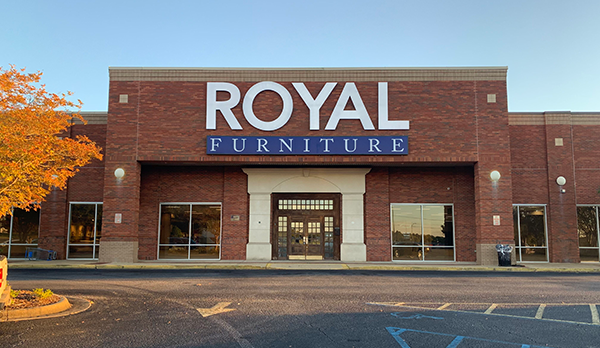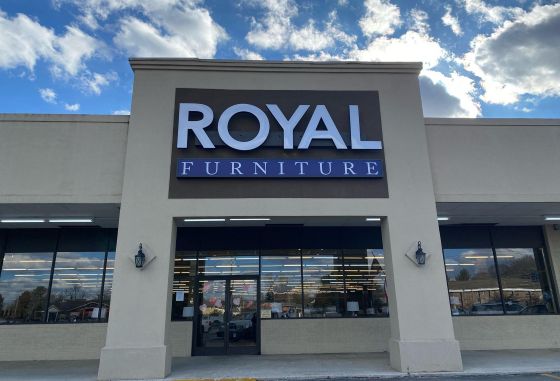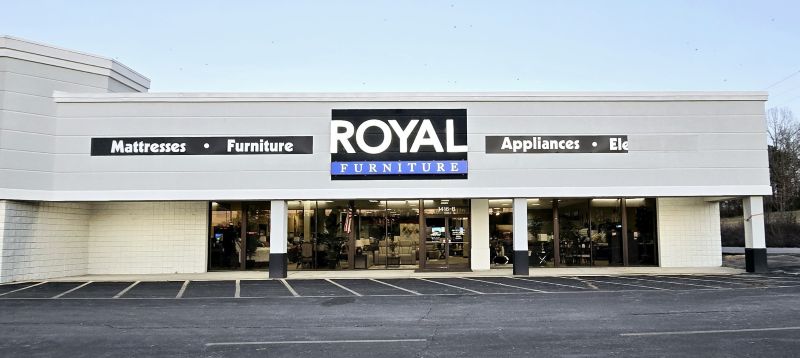14 new locations are in markets similar to those where the retailer has operated dating back to 1946
MEMPHIS, Tenn. — When longtime furniture retailer Royal Furniture took over the leases of 14 former Badcock stores through a bankruptcy proceeding last fall, it allowed the company to more than double its footprint in just a few short months.
Between December and February, those stores have all opened, expanding the number of stores to 26, which are in addition to Royal’s distribution center also in Memphis.
The former Badcock stores, which have been renamed Royal, also are within Royal’s three-state area of Tennessee, Alabama and Mississippi.
Eight of the new stores are in the Alabama cities of Auburn, Montgomery, Prattville, Oxford, Gadsten, Florence, Decatur and Athens, and another six are in Tennessee, including Cookeville, Tullahoma, Winchester, Fayetteville, McMinnville and Columbia.

For Royal, which dates back to 1946, the acquisitions were an opportunity to grow the business significantly, while serving customers in those communities where the Badcock closings represented a gap in the marketplace.
Thus far, the reaction has been extremely positive as the company has seen sales roughly doubling each month the stores have been open. Over the course of the year, the company expects them to add an estimated 30% to 35% increase in volume, noted Mike Faber, president.
“It will be a significant lift,” Faber told Home News Now, adding that its same-store sales for Royal were already up in the high single digits through February and that the new stores are only boosting the numbers further. “We have already seen our revenues are doubling every month in these new stores, but some of that is just bringing them online. But if we keep going in that trajectory, we will be in a very good spot.”
He noted that the store acquisitions, like any other venture, involved some level of uncertainty. But the company, he said, was building from a solid foundation that made it not only possible, but a noteworthy success in the process.
“Anytime you add 14 stores to a chain that only has 12, there is always risk involved,” he said. “We are certainly extremely well capitalized, and we didn’t have any outstanding liabilities really to speak of so we were in an extremely good place and platform to be able to kind of do this.”

The former Badcock stores, which range from 15,000 to 20,000 square feet, are slightly smaller than the typical Royal store, which ranges from 25,000 to 30,000 square feet. However, the Royal stores carry similar merchandise and brands that will be familiar to those former Badcock customers, including Ashley, Serta Simmons, Cheers/Man Wah and Kuka, to name several.
The communities where the acquired stores are located also are similar in size where Royal already operates, which in turn created some synergies with Royal’s existing business model.
“This was in our general geographic footprint from a delivery and media perspective,” Faber said. “We are in smaller towns and traditionally have been so they are not too far from everything we have been doing for years. That is kind of how we picked the stores we picked.”
Faber said the business sees an opportunity in these types of smaller communities which are considered exurbs of major metro areas such as Birmingham or Nashville, for example, where the overall cost of living can be higher.
“We’ve never done anything of this scope and scale this fast,” he said. “But I think there is a lot of competitors unfortunately that have vacated markets. So we see an opportunity particularly in some of these smaller towns.”

He also noted that combined with job creation and affordability, these smaller communities are growth areas that are appealing to many people across different ages and demographics. Thus, it made sense to invest in these markets with a furniture store that also meets their needs.
“It’s been kind of a demographic shift in the way people are living, and we are just trying to meet that need where people are and where their homes are and where they are looking to relocate.”
In addition, the company has been able to rehire some of the same management and employees that were familiar faces in these markets.
“These are very tightly knit communities, so I think people have been very receptive,” Faber said. “They see the same faces that they saw when they were Badcock stores, and those are people they trust and like to do business with and that have taken care of them in the past. So overwhelmingly, I think it has been a positive experience.”
He also noted that in addition to familiar brands, the new stores also offer similar product and services including in-house financing that Badcock stores had become known for in years past.
Today, despite some uncertainties with the economy, including the arrival of tariffs, he is optimistic the stores will remain an increasingly important part of the Royal network.
“This is a bit of a new business model for us,” he said, noting that while slightly smaller footprints than the typical Royal store, the new stores are well suited to the communities they serve. “It will offer us a new opportunity and an avenue of growth that we could take to other communities going forward. So it is a bit of an experiment for us at Royal, but we see a tremendous opportunity, particularly in these towns that we feel may have been overlooked. They have great people in them, and they don’t need to drive 50 miles to get a value that they can get right down the street.”




